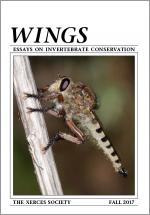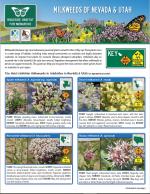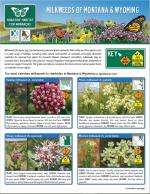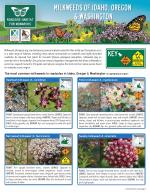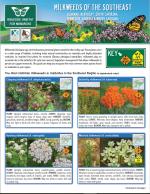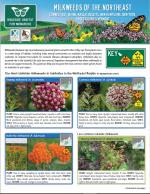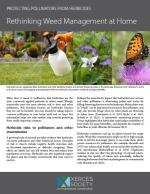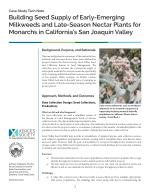As a science-based organization, the Xerces Society produces dozens of publications annually, all of which employ the best available research to guide effective conservation efforts. Our publications range from guidelines for land managers, to brochures offering overviews of key concepts related to invertebrate conservation, from books about supporting pollinators in farmland, to region-specific plant lists. We hope that whatever you are seeking—whether it's guidance on making a home or community garden pollinator-friendly, advice on developing a local pesticide reduction strategy, or detailed information on restoring habitat—you will find it here!
Find Publications
Use the search functions to sort by publication type (books, guidelines, fact sheets, etc.), location, and/or subject (agriculture, gardens, pollinators, pesticides, etc.).
Seeking protection for the Crotch bumble bee (Bombus crotchii), Franklin's bumble bee (Bombus franklini), Suckley cuckoo bumble bee (Bombus suckleyi), and western bumble bee (Bombus occidentalis).
Seeking protection for the Crotch bumble bee (Bombus crotchii), Franklin's bumble bee (Bombus franklini), Suckley cuckoo bumble bee (Bombus suckleyi), and western bumble bee (Bombus occidentalis).
Developed for citizen scientists to document how native bee communities change through time in pollinator habitats. It includes an introduction to bee identification, an overview of biology, tools for identifying different groups of bees, and observation datasheets. A pocket guide is also available for use in the field.
To Expand Pollinator Habitat on Farms
In this document we outline the basic steps of collecting native plant seed using readily available, non-specialized equipment, as well as tips for cleaning, storing, and sharing seed to expand pollinator habitat on farms and in our communities.
Essays on Invertebrate Conservation
Conservation is sometimes seen as taking place in a distant wilderness or requiring a lot of time. In this issue of Wings we look at conservation in urban areas and how you can take action in your own neighborhood to make a difference.
A diversity of milkweed species is found on roadsides, and play an important role in supporting the life cycle of monarchs. This guide can help you recognize the most common native species of milkweed on roadsides in your region.
A diversity of milkweed species is found on roadsides, and play an important role in supporting the life cycle of monarchs. This guide can help you recognize the most common native species of milkweed on roadsides in your region.
A diversity of milkweed species is found on roadsides, and play an important role in supporting the life cycle of monarchs. This guide can help you recognize the most common native species of milkweed on roadsides in your region.
A diversity of milkweed species is found on roadsides, and play an important role in supporting the life cycle of monarchs. This guide can help you recognize the most common native species of milkweed on roadsides in your region.
A diversity of milkweed species is found on roadsides, and play an important role in supporting the life cycle of monarchs. This guide can help you recognize the most common native species of milkweed on roadsides in your region.
A diversity of milkweed species is found on roadsides, and play an important role in supporting the life cycle of monarchs. This guide can help you recognize the most common native species of milkweed on roadsides in your region.


